Abstract
Blastogenic responses of normal human peripheral blood lymphocytes cultured in media supplemented with serum from children with kwashiorkor were, on average, 47.7% of those observed when the same cells were cultured in the presence of normal AB serum. Incorporation of radioactive uridine was also diminished in the presence of normal AB serum. Incorporation of radioactive uridine was also diminished in the presence of kwashiorkor serum indicating that lectin-induced RNA synthesis was also affected. The kwashiorkor serum effect was not due to a cytotoxic action nor could it be attributed to the presence of saccharides or other inhibitors of the inducing lectins. Mixing experiments showed that kwashiorkor serum was not inhibitory, but that it lacked factors present in normal serum that are required for optimal lymphocyte blastogenesis. The deficiency of these factors could largely be rectified by supplementing kwashiorkor serum with an ultrafiltrate of normal serum containing components with molecular weights of less than 500 Daltons. We conclude that nutritional deprivation of severity sufficient to cause kwashiorkor leads to a deficiency of low molecular weight lymphocyte growth factors. This lack may contribute to the immunodeficiency associated with the disease.
Full text
PDF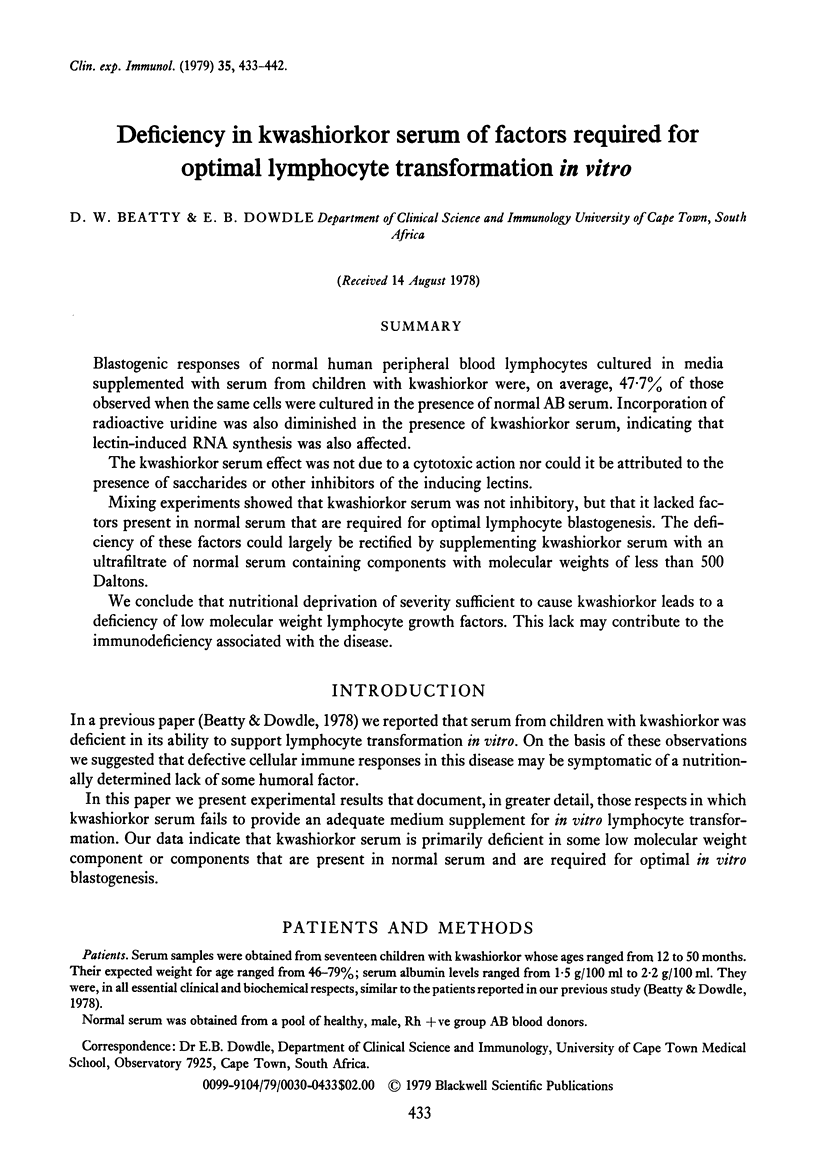
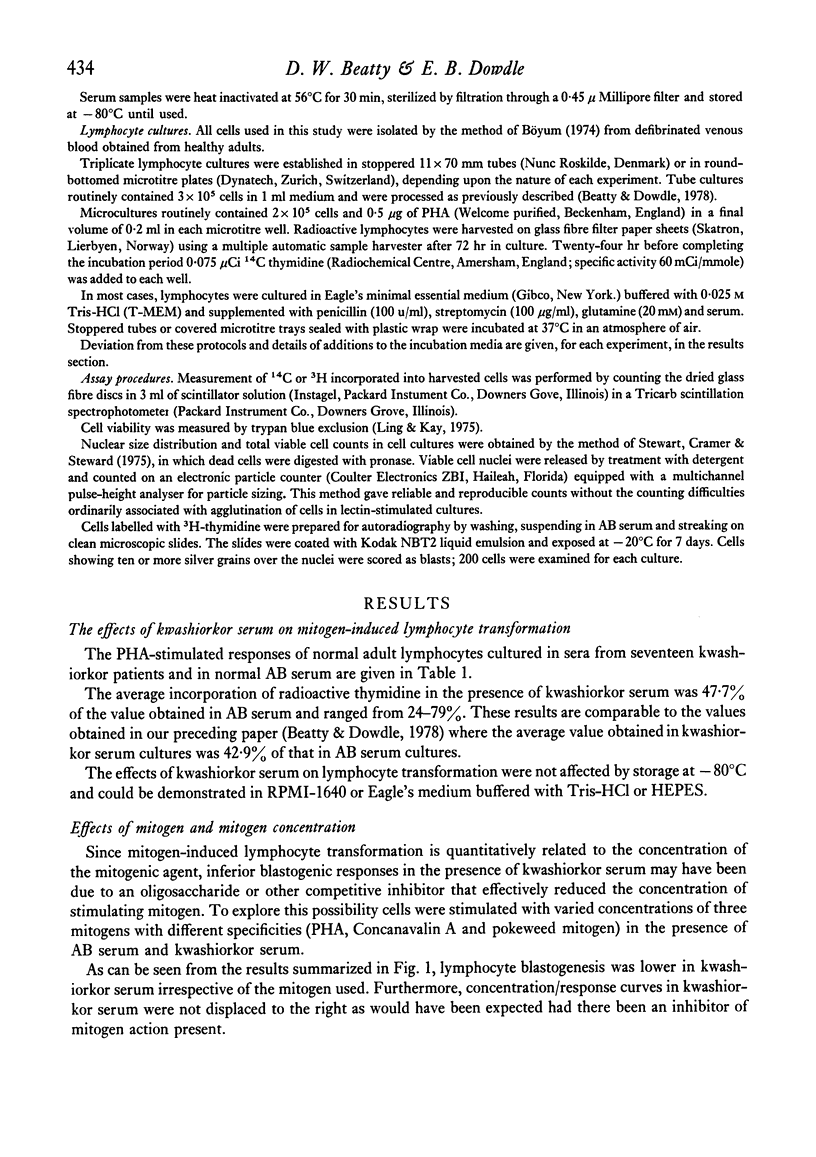
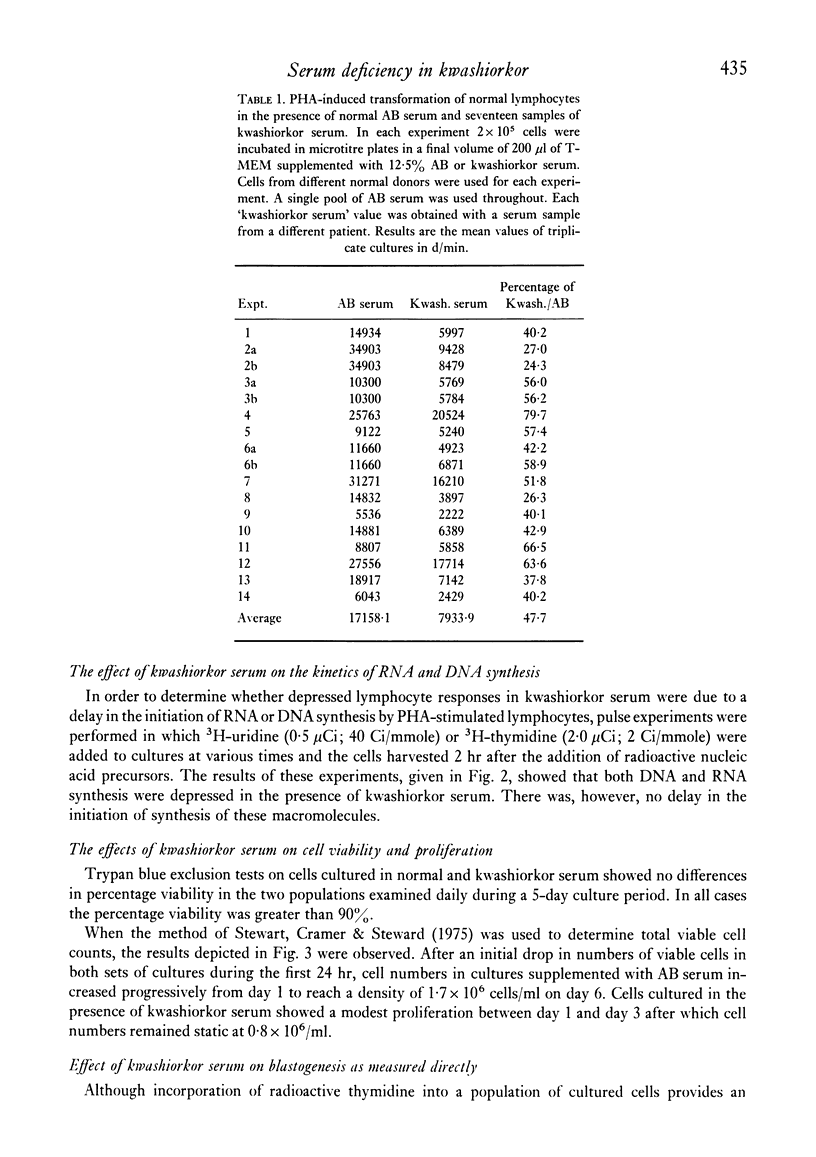
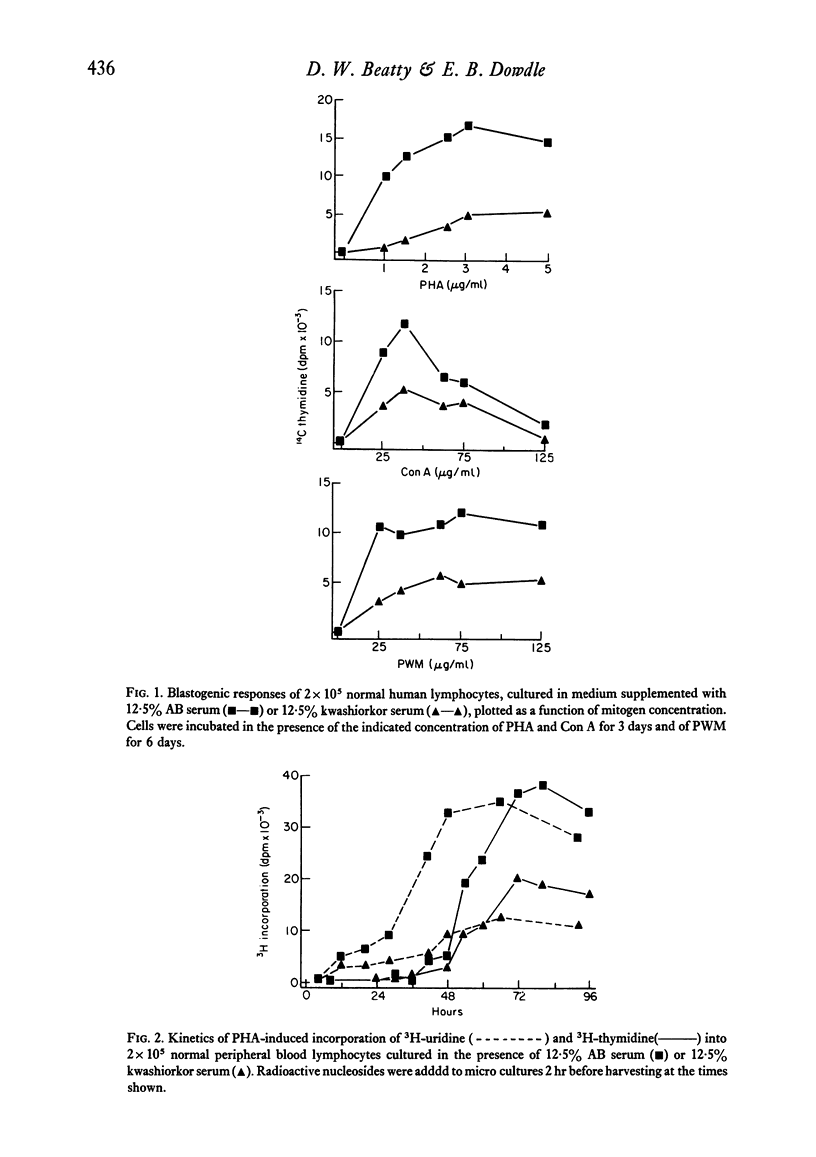

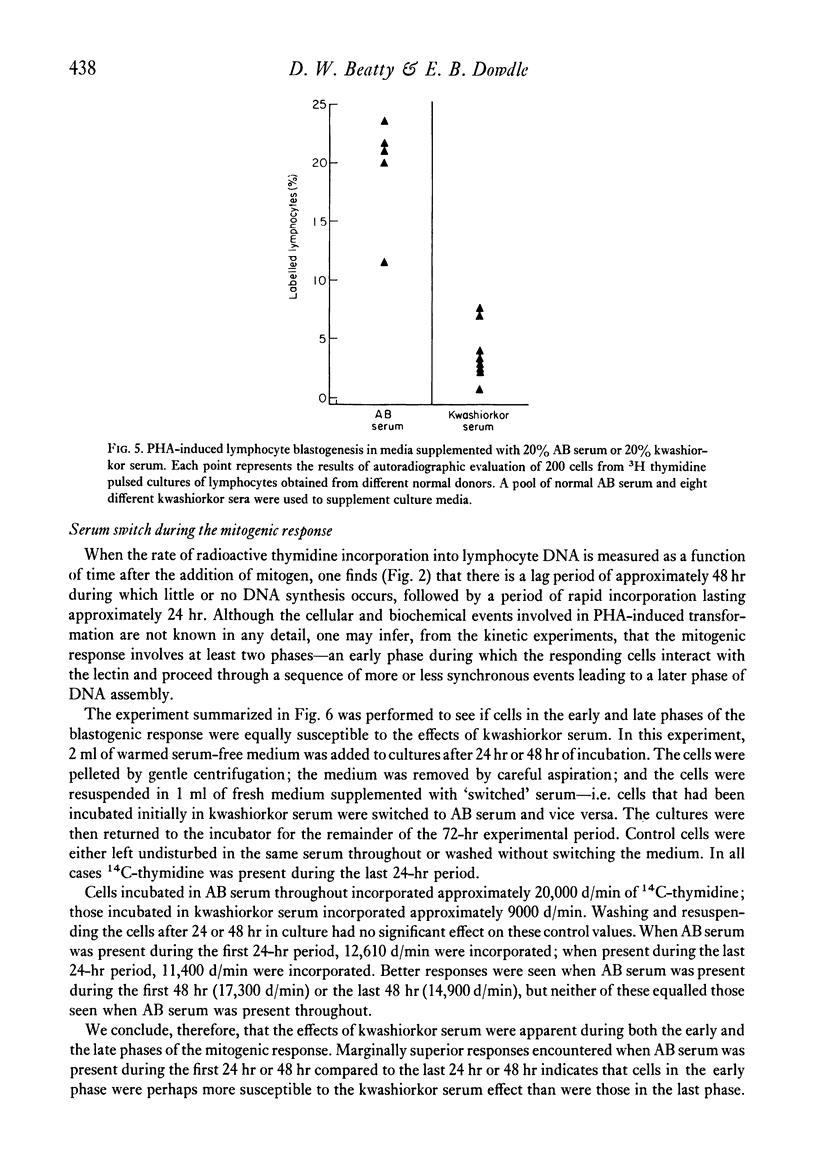
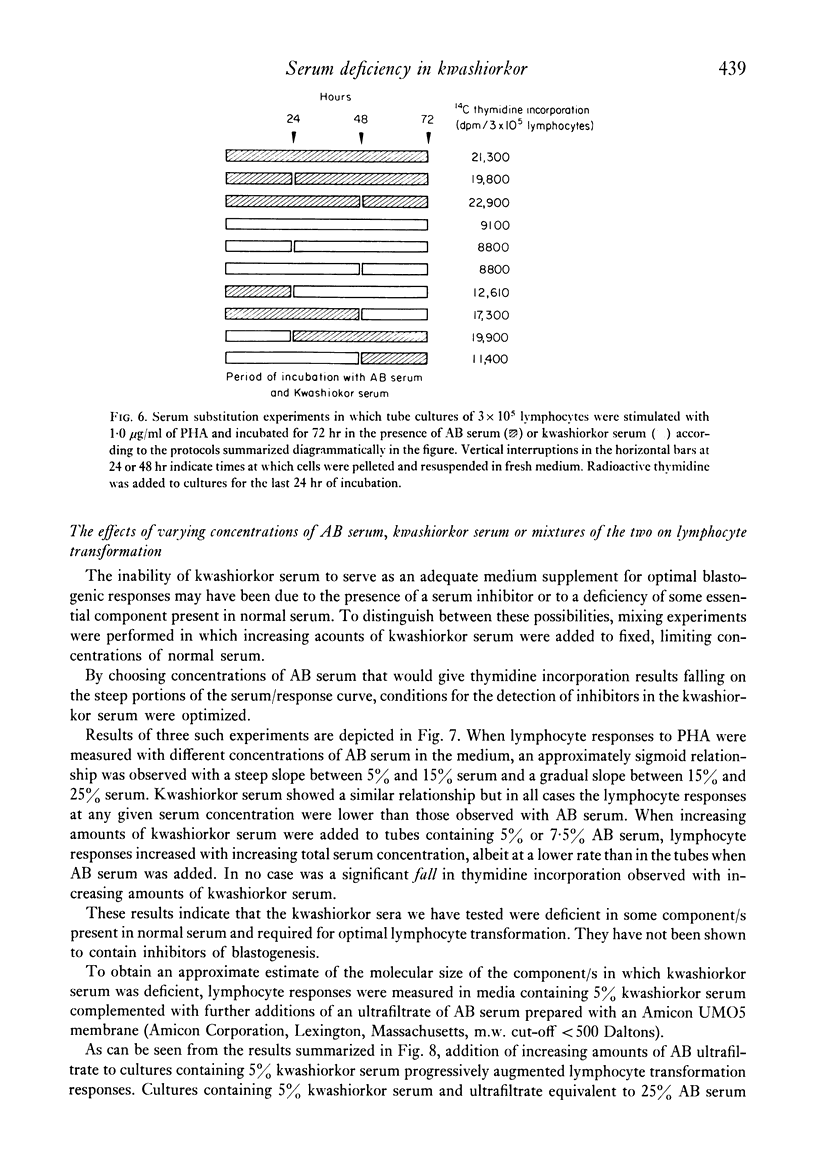
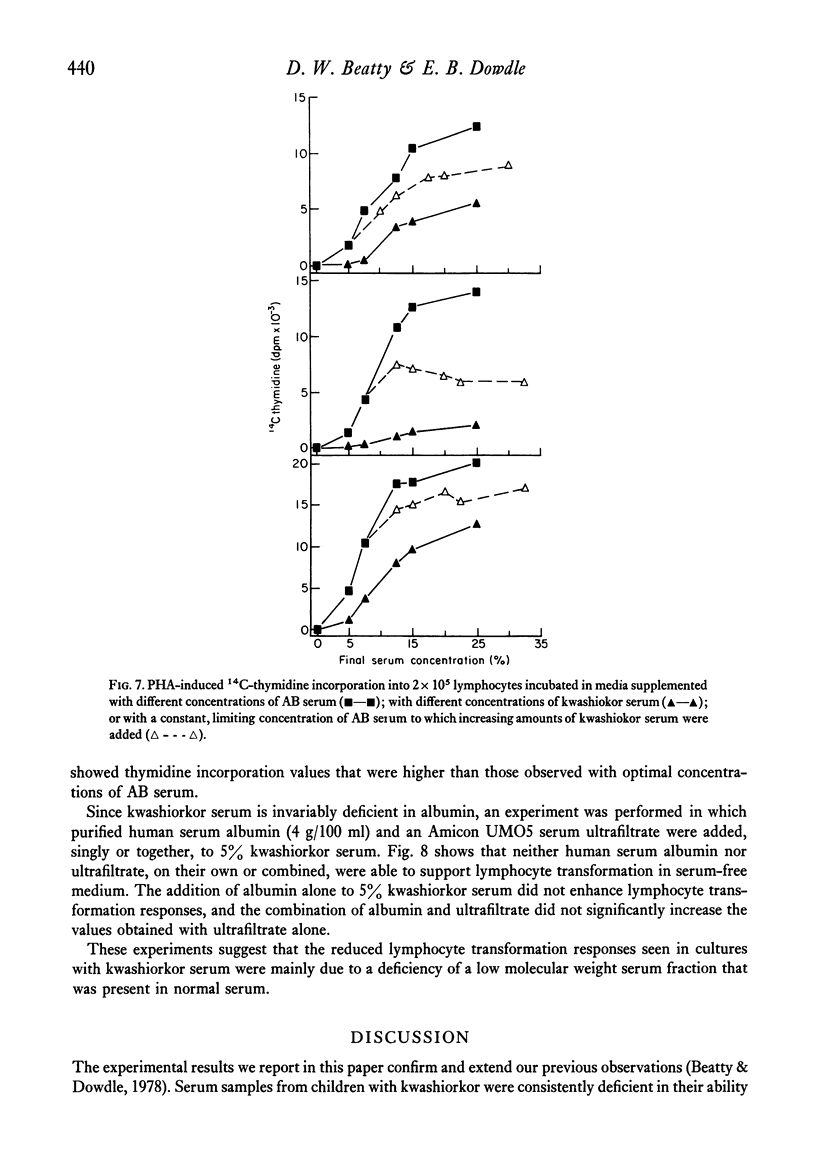
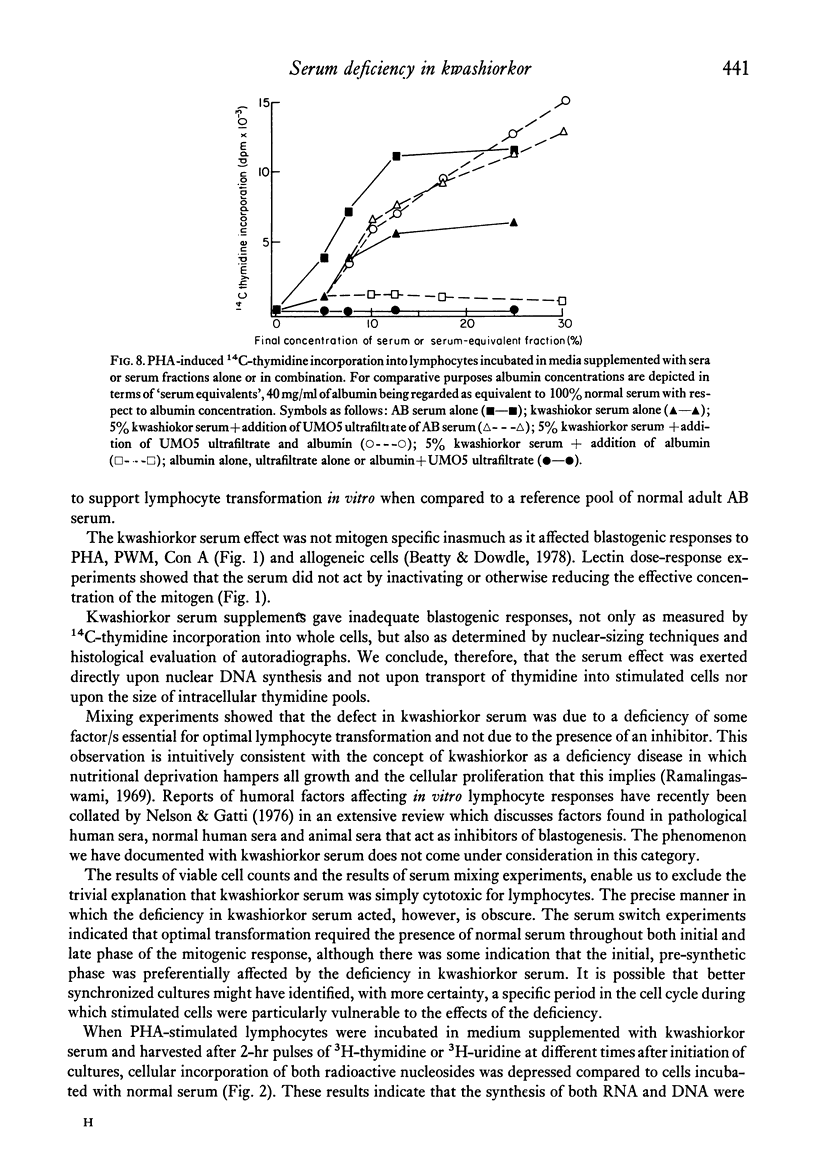

Selected References
These references are in PubMed. This may not be the complete list of references from this article.
- Beatty D. W., Dowdle E. B. The effects of kwashiorkor serum on lymphocyte transformation in vitro. Clin Exp Immunol. 1978 Apr;32(1):134–143. [PMC free article] [PubMed] [Google Scholar]
- Burgess B. J., Vos G. H., Coovadia H. M., Smythe P. M., Parent M. A., Loening W. E. Radio-isotopic assessment of phytohaemagglutinin-stimulated lymphocytes from patients with protein calorie malnutrition. S Afr Med J. 1974 Sep 11;48(44):1870–1872. [PubMed] [Google Scholar]
- LING N. R., SPICER E., JAMES K., WILLIAMSON N. THE ACTIVATION OF HUMAN PERIPHERAL LYMPHOCYTES BY PRODUCTS OF STAPHYLOCOCCI. Br J Haematol. 1965 Jul;11:421–431. doi: 10.1111/j.1365-2141.1965.tb06604.x. [DOI] [PubMed] [Google Scholar]
- Mueller G. C. Biochemical events in the animal cell cycle. Fed Proc. 1969 Nov-Dec;28(6):1780–1789. [PubMed] [Google Scholar]
- Nelson D. S., Gatti R. A. Humoral factors influencing lymphocyte transformation. Prog Allergy. 1976;21:261–341. [PubMed] [Google Scholar]
- Ramalingaswami V. Interface of protein nutrition and medicine in the tropics. Lancet. 1969 Oct 4;2(7623):733–736. doi: 10.1016/s0140-6736(69)90440-1. [DOI] [PubMed] [Google Scholar]
- Spieker-Polet H., Polet H. Identification of albumin as the serum factor essential for the growth of activated human lymphocytes. J Biol Chem. 1976 Feb 25;251(4):987–992. [PubMed] [Google Scholar]
- Stewart C. C., Cramer S. F., Steward P. G. The response of human peripheral blood lymphocytes to phytohemagglutinin: determination of cell numbers. Cell Immunol. 1975 Apr;16(2):237–250. doi: 10.1016/0008-8749(75)90115-x. [DOI] [PubMed] [Google Scholar]
- Stewart C. C., Goldstein S. The direct determination of cytolytic antibody titer and specificity. J Lab Clin Med. 1974 Sep;84(3):425–437. [PubMed] [Google Scholar]
- Whitehead R. G., Coward W. A., Lunn P. G. Serum-albumin concentration and the onset of kwashiorkor. Lancet. 1973 Jan 13;1(7794):63–66. doi: 10.1016/s0140-6736(73)90465-0. [DOI] [PubMed] [Google Scholar]


